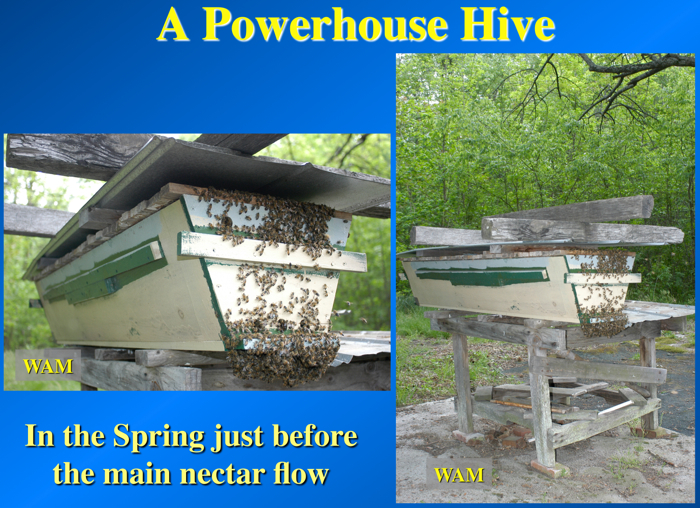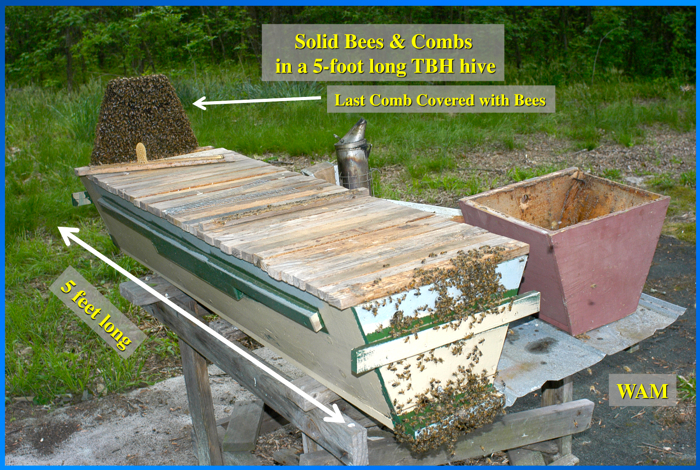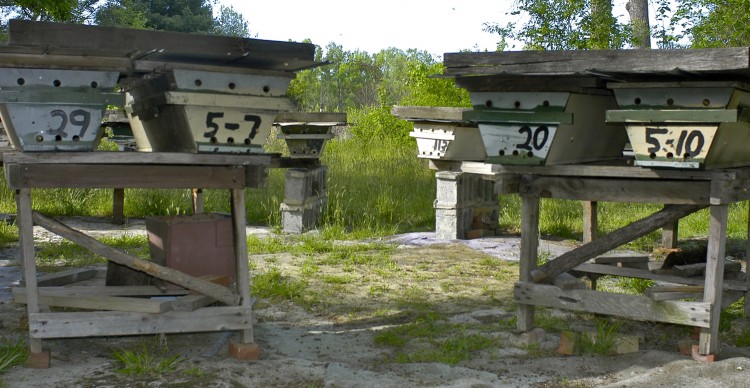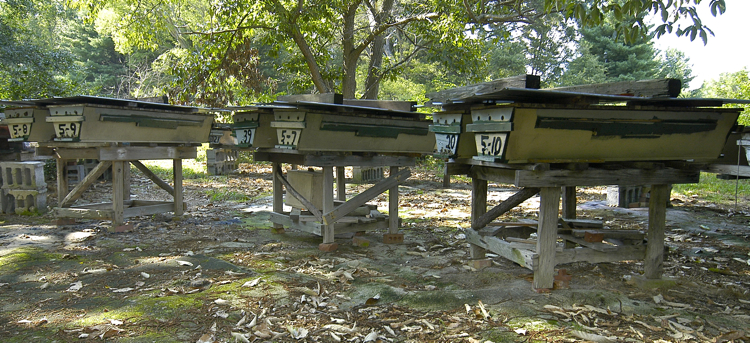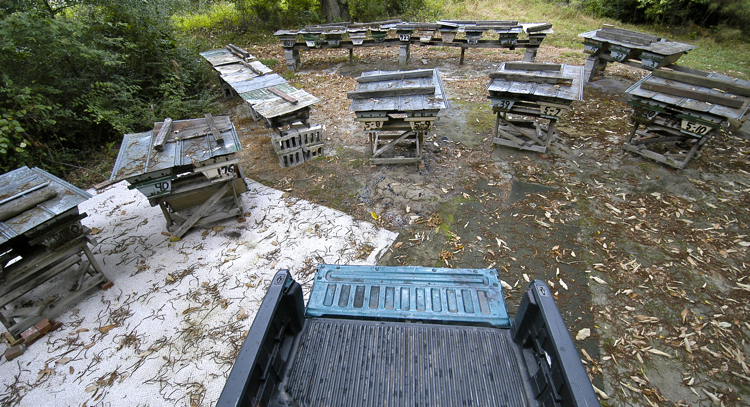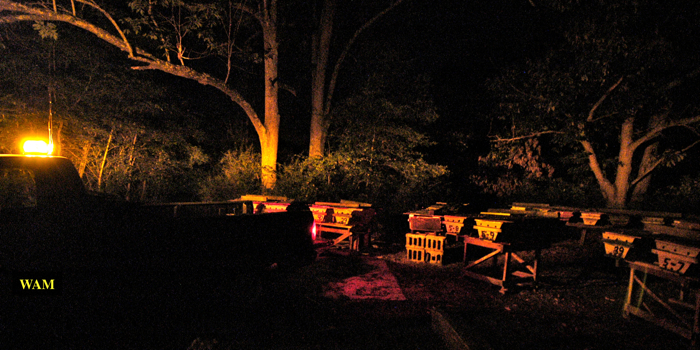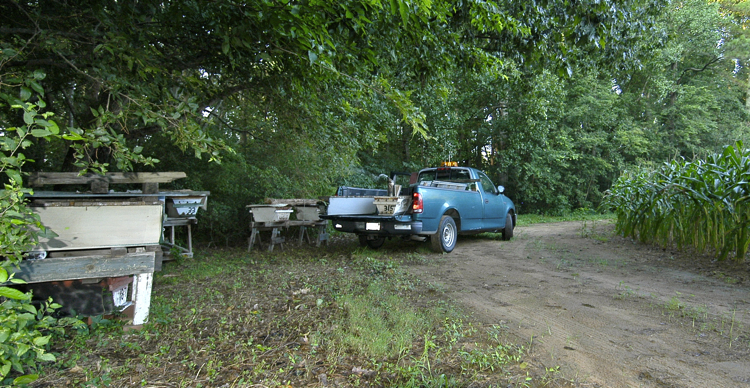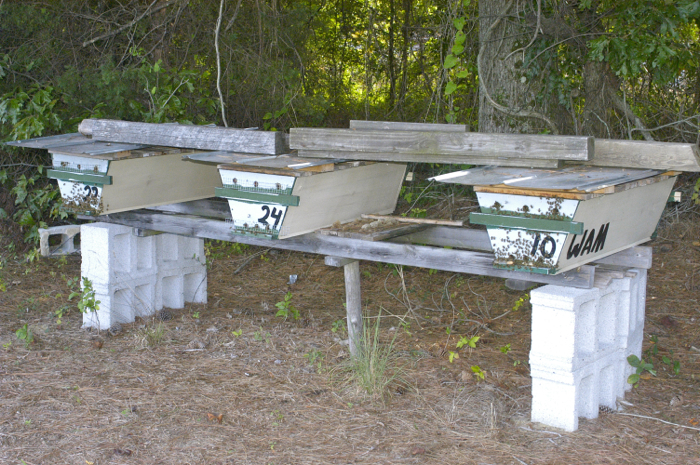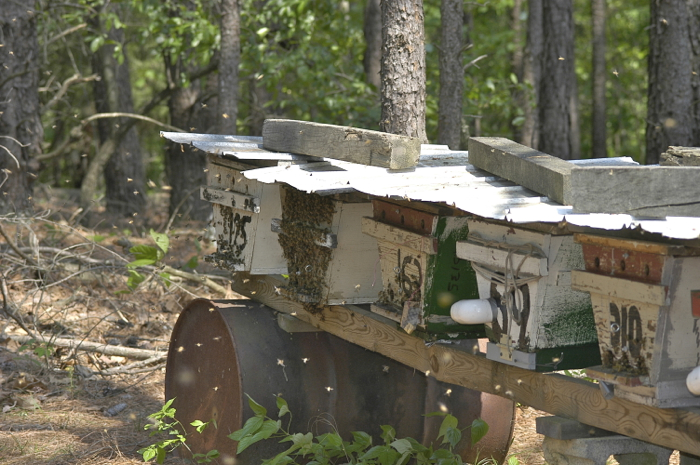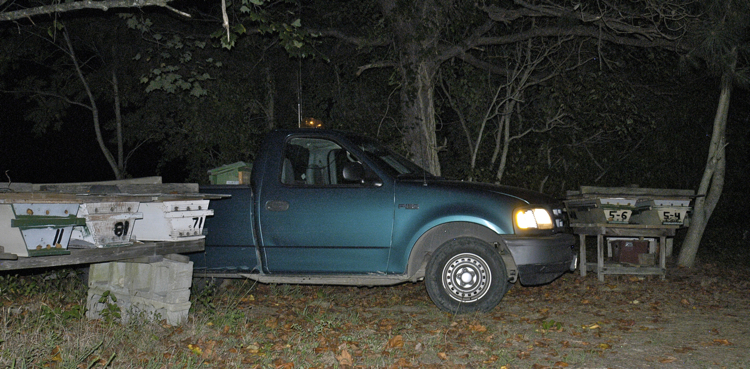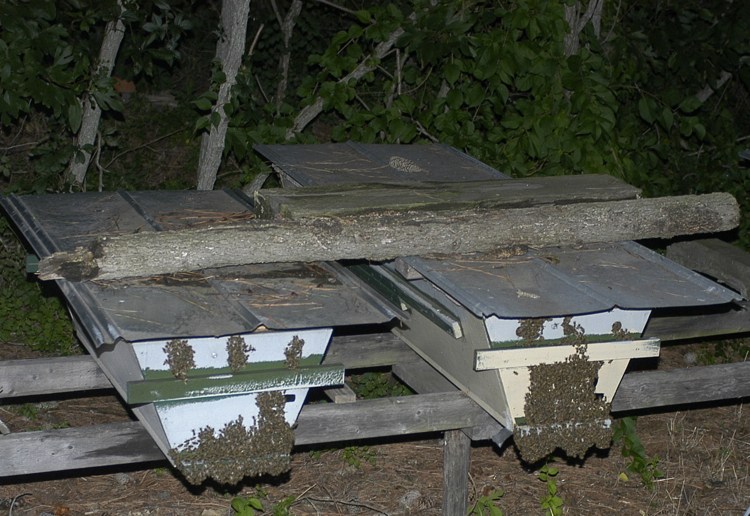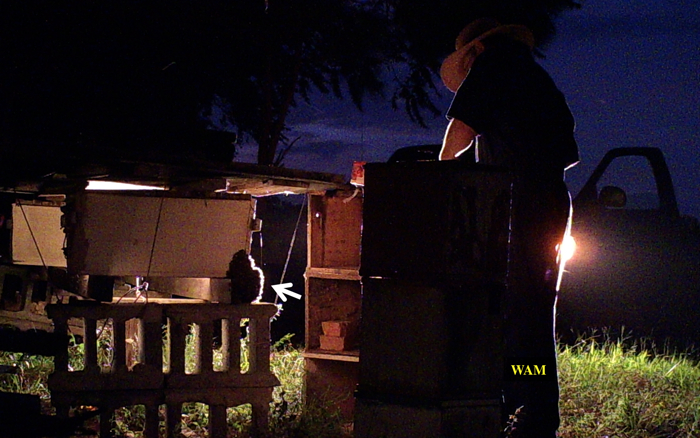Top-Bar Apiaries
Strong Powerhouse Top-Bar Hive Colonies
Once a beekeeper has too many hives than cannot all be kept in a typical backyard, she or he needs other apiary locations. Keeping strong colonies comes from being well educated in all aspects of beekeeping. Otherwise you can have a chronic problem of replacing too many dead colonies, so the number of colonies do not increase (and the cost of replacement bees is very expensive). Below is an example of a strong colony in a five-foot long hive. The colony did not try to swarm during the spring build up period from using the management techniques in the book (but some colonies will try to swarm, a fact of beekeeping life.)
The picture below shows the colony extending from the front of the hive to the back. The big comb on the top of the hive is the last one removed from the rear of the hive. (The top bar with the little new comb just covers a small space at the back of the hive that is not wide enough for a full-size comb. The bees are just building some burr comb to fill in the narrow space.)
Top-Bar Apiaries
I have numerous top-bar hive apiaries in rural locations; some even without a cell phone signal. It is best to spread out the hives in different apiary locations. Too many colonies competing with each other for nectar and pollen plants is not good management. (Local beekeepers can help determine the maximum number of hives in one place.) Finding apiary locations with enough nectar and pollen forage is one of the most important aspects of beekeeping.
My hives are on elevated stands at a comfortable working height with plenty of space in between the hive pairs for efficient work, which is important since I do all the labor myself. Below are five-foot long hives that can weigh up to about 240 pounds.
With out-apiaries, one needs a bee truck. My truck has a homemade toolbox behind the cab with all kinds of small tools for top-bar hives. Axes and a large hand saw are behind the seat to cut fallen trees blocking dirt roads to the hives. When out checking apiaries you need to be ready for most anything. My truck doors stay open when I work an apiary. The air conditioning in the truck died years ago (it needs a recharge) so I work in the heat and humidity all day. I’m used to it.
Notice how I arrange my hive stands. I lay out my apiaries so I can move the hives. With so many apiaries, my rule is that all my top-bar hives are mobile. The heavy hive weight is of little concern, although I try not to move hives when they are full of honey, but I surely can–and quickly. I back the truck right up to the hive stand and move the hives as explained in my book Top-Bar Hive Beekeeping: Wisdom and Pleasure Combined. Here is the view from on top of the truck cab backing up to a row of hives. I just line-up on a pair and ease up until the tailgate is a foot or so from the stand. (Then follow the procedures in the book.)
Below is the view from on top of the truck cab backing up to a “U” shaped arrangement of hives. Yes, that is carpet in the apiary (a new white piece on the left side). Old carpet gives excellent weed control. Plus I can quickly tell what the bees are discarding, an important consideration in diagnosing colony health problems. Notice in the above pictures there is nothing to trip on around the hive stands, a critical concern since I usually move the hives at night.
As explained in the book, I have a rotating flasher on the cab of the bee truck to warn traffic of my slower speed when hauling hives. At night when loading and unloading hives in the apiaries, I leave that light on. The bees are not attracted to it. The light has a strobe effect illuminating the apiary. No need for handling a flashlight around the hives, which does attract the bees.
Next is a scene where I am shifting around some hives early in the morning before moving out others to farms for pollinating fields of cantaloupes and watermelons.
Some hives go on linear stands built from two-by-fours (or larger lumber) set on cinder blocks as seen on the background above and a close-up below.
Here is a short row of hives.
Here is part of a long row of hives photographed with the sunlight at an angle to show the bees in flight.
I also patrol my apiaries at night to check on research projects and other matters. A typical late summer night scene appears below.
On hot nights, my bees cluster on the front of the hives, helping to keep the hive interior cooler, especially when the bees cannot fly to bring back water to cool the hive (by evaporation).
My bee research can extend into the night. Below I am checking the cameras (out of view) aimed at a (possible) usurpation swarm. Colony usurpation (colony take over) is when a swarm takes over another colony, kills its queen, and the usurpation swarm queen becomes the queen of the colony. I have observed this usurpation behavior in my bees, and others in nearby states have seen it too. The swarm has clustered under the alighting board of the hive indicated by the white arrow. (The cluster resembles a bee beard on a hot summer night. However it is a swarm, but it might not try to take over the colony.) One of the motion-activated game cameras in the apiary took the picture, catching me in the scene.
I’ll add more pictures later. To learn a complete system of beekeeping for top-bar hive beekeeping, please go back to the Welcome page to order the book. I hope you enjoyed looking over the pictures. Kind Regards, Dr. W. A. Mangum, WAM.
